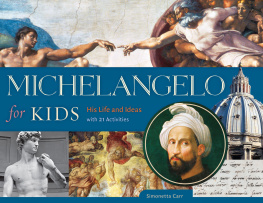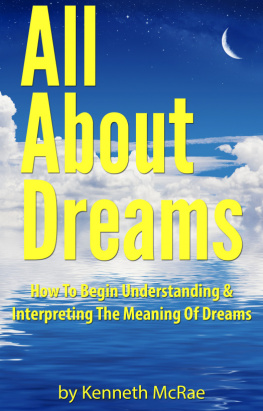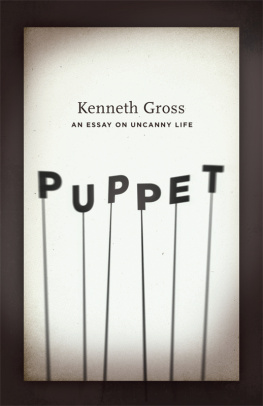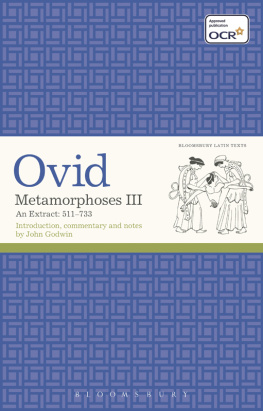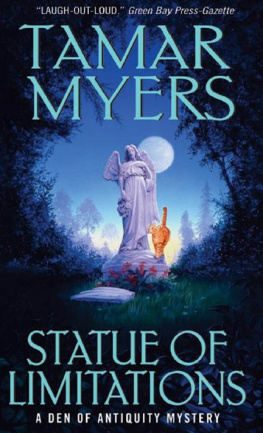The
DREAM
of the
MOVING
STATUE
Kenneth Gross
Cornell University Press
Ithaca and London
Copyright 1992 by Cornell University
All rights reserved. Except for brief quotations in a review, this book, or parts thereof, must not be reproduced in any form without permission in writing from the publisher. For information, address Cornell University Press, 124 Roberts Place, Ithaca, New York 14850.
First published 1992 by Comell University Press.
Lines from Irving Feldman, " All of Us Here," from All of Us Here and Other Poems (copyright 1983, 1984, 1985, 1986, by Irving Feldman), used by permission of Viking Penguin, a division of Penguin Books USA, Inc.; lines from Richard Howard, " The Giant on Giant-Killing," from Fellow Feelings (copyright 1976 by Richard Howard), reprinted by permission of the author; lines from Alexander Pushkin, " The Bronze Horseman," from The Bronze Horseman and Other Poems, trans. D. M. Thomas (translation copyright 1982 by D. M. Thomas), used by permission of Viking Penguin, a division of Penguin Books USA, Inc., and John Johnson (Authors' Agent) Limited; lines from Rainer Maria Rilke, " Archaic Torso of Apollo," from The Selected Poetry of Rainer Maria Rilke, trans. Stephen Mitchell (translation copyright 1982 by Stephen Mitchell), reprinted by permission of Random House, Inc.; lines from Wallace Stevens, " Notes toward a Supreme Fiction," from Collected Poems of Wallace Stevens (copyright 1954 by Wallace Stevens), reprinted by permission of Alfred A. Knopf, Inc., and Faber and Faber Ltd.
Illustrations from The Standard Edition of the Psychoanalytic Works of Sigmund Freud, trans. and ed. James Strachey, volume 13, reprinted by permission of The Institute of Psycho-Analysis and The Hogarth Press, and from The Collected Papers of Sigmund Freud, volume 4, authorized translation under the supervision of Joan Riviere, published by Basic Books, Inc. 1959 by arrangement with The Hogarth Press Ltd. and The Institute of Psycho-Analysis, London, reprinted by permission of Basic Books, a division of HarperCollins Publishers Inc.
International Standard Book Number 0-8014-2702-9
Library of Congress Catalog Card Number 92-52755
Printed in the United States of America
Librarians:Library of Congresscataloging information
appears on the last page of the book.
The paper in this book meets the minimum requirements
of the American National Standard for Information Sciences
Permanence of Paper for Printed Library Materials, ANSI 239.48-1984.
ForJohn Hollander
[This page intentionally left blank.] |
|
Illustrations
| 1. | | Charlie Chaplin, City Lights 4 |
|
| 2. | | Charlie Chaplin, City Lights 5 |
|
| 3. | | Charlie Chaplin, City Lights 5 |
|
| 4. | | Jean Cocteau, Le sang d'un pote 12 |
|
| 5. | | Andreas Vesalius, woodcuts from De humani corporis fabrica 18 |
|
| 6. | | George Segal, The Brick Wall 26 |
|
| 7. | | William Blake, "Laocon" 67 |
|
| 8. | | Jean-Len Grme, Pygmalion and Galatea 76 |
|
| 9. | |
| 10. | | Donatello, bronze David 158 |
|
| ii. | | Ariadne, Roman sculpture 171 |
|
| 12. | | Donatello, Judith and Holofernes 177 |
|
| 13. | | Cellini, Perseus and Medusa 177 |
|
| 14. | | Donatello, Lo Zuccone 180 |
|
| 15. | |
| 16. | Drawings from Sigmund Freud, "The Moses
of Michelangelo" 188-89 |
|
Preface
These things cannot happen: a statue cannot move or speak; it cannot open its eyes, nod, or call out, cannot tell a story, dance, or do work; it cannot turn on the viewer, or run away, banishing its solidity and repose, shedding its silence. A statue is almost by definition a thing that stands still, and what we call its movement is at best a resonant figure of speech. Yet these things happen; we imagine them happening. Our language requires that they happen. The fantasy of a statue that comes to life is as central a fable as we have. The idea of motion or speech in an inanimate stone is an inescapable possibility, a concept of a sort so basic that we can hardly call it a metaphor. Time and again, we find texts in which the statue that stands immobile in temple or square descends from its pedestal, or speaks out of its silence. Such fantasies are simply part of what we know about statues, and what statues can represent to us; they are part of the way that we stitch ourselves and statues into the world. They are also part of what we do not know about statues, or have yet to know.
The idea of the animated statue appears everywhere. One finds it in fairy tales and philosophy, in ancient magic and romantic novellas, in classical ballet and modern television commercials (for wine, perfume, coffee, soap, game shows, and body building, to name just a few). This book is an attempt to describe the often ambiguous sources of such fantasies, and to consider the parables they offer about things that are not statues. Among other things, fantasies about animated statues can suggest how the reciprocal ambitions of writing and
sculpture animate each other, and the paradoxical figures of life and voice their conflict can generate; they also point to the ambivalent crossings of fear and desire that continue to bind our fantasies and memories to the realm of unliving images and objects.
The pages that follow consider the place of fictive statues in the poetry of Ovid, Blake, Pushkin, Browning, Rilke, and Stevens, as well as contemporaries such as Irving Feldman and Richard Howard; in biblical and nineteenth-century narrative; in Shakespearean drama; in films by Charlie Chaplin, Franois Truffaut, and Peter Greenaway; in the psychoanalytic writings of Freud and the philosophical texts of Wittgenstein. I also discuss both legendary statues such as the colossus of Memnon and actual statues such as Michelangelo's Night and Donatello's Zuccone. The reader will encounter many variations on the idea of the animated statue here: oracular statues, bleeding statues, murderous statues, consoling statues; statues that can move and not speak, that can speak but not hear. There are also stories about human beings who have themselves turned into statues.
This book is not, however, an attempt at a systematic iconological history or structural taxonomy. It rather takes the form of a series of linked critical meditations, shifting frequently between broad theoretical speculation, exemplary anecdote, and close reading of individual texts. Some chapters revolve around particular thematic questionsfor example, the representation of living statues as objects or sources of violence, the depiction of living statues as objects of desire. Others dwell on more broadly generic mattershow the fantasy of animation plays a part in "ekphrastic" writing, literary texts that describe real or fictive works of art; or how that fantasy relates to our understanding of actual sculpture. But overall the argument unfolds in a rather disjunctive fashion, often circling back on itself, often making considerable leaps within the historical continuum. It is an approach that I hope will reveal, more effectively than any straightforward survey, the sources of the fantasy's complexity and power.



